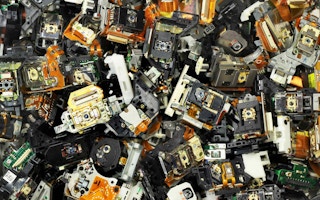Despite many old electronic devices still being fit for purpose, there is often a stigma attached to buying second-hand products. As a result, some manufacturers are still hesitant to invest in reuse schemes because consumers tend to favour the newest device, causing an increasing amount of discarded electronics to end up in landfill well before the end of their useful life.
After-market specialists, retailers, and manufacturers need to aim to change the mindset of consumers, as well as make smarter, faster, and more efficient decisions in the supply chain in relation to re-use, parts harvesting, or optimising on the residual value of electronic devices.
For both buyers and sellers there are common challenges associated with purchasing used electronic equipment. In fact, when it comes to cars, the majority of people worldwide bought a pre-owned vehicle, while less than five per cent who purchased a smartphone chose not to buy new[1].
Fortunately, there are solutions to overcome people’s misconceptions, and if Original Equipment Manufacturers (OEMs) take the lead they can add a lucrative additional revenue stream.
There must be something wrong with it?
The first challenge is that potential customers dismiss the purchase of a pre-owned product on suspicion that either something may be “wrong” with it (why would someone have returned it?), and why is it so cheap?
As well as speculation as to whether the object is from an untrustworthy source, e.g. counterfeit. But most used equipment has valid reasons to be cheaper than their “new” equivalents: low acquisition costs in some cases, and zero or lower taxes/duties/levies applicable in many cases.
Are all the parts up to standard?
Another challenge with pre-owned equipment is the lack of defined performance or quality standards. This in turn creates confusion and concern from the potential buyer, as they are not clear as to what exactly they are buying and how it has been handled.
For example, customers generally don’t consider products that are made with recycled materials to be “used”. But they would consider products that contain working parts that have been salvaged from other used products to be – at least in some way - used.
This is a challenge OEMs are best positioned to address. Indeed, consumers and distribution channels tend to trust brands and are already more likely to buy OEM re-certified equipment than any other used equipment due to its quality perception.
“
By extending the useful life of a product it not only maximises value but also reduces consumption rates of the components needed to produce new electronics. In turn this helps society move towards a more circular economy.
Is the device fit for purpose?
Additionally, before a product is deemed fit for re-use, questions should be asked of any device. These should include: does the device operate at a certain bandwidth, speed, or capacity? Does it have key functionality built in to communicate with other devices? Are consumer needs likely to change much over the next five years and so can it already cope with envisaged future demands that may be required from it? Although answers of course depend on the use case - certain requirements must be met by resellers.
To assure customers that products are still in good working order, retailers and OEM’s should work with after markets services specialists to ensure standardised procedures are in place. One such programme Teleplan is trialling is the ‘product passport’ service, which is allocated to every item and means that the parts, components, materials, and manufacturing and repair history of each device is recorded.
As a result, what can be re-used, melted down, or recycled into other products can be immediately ascertained. Or the latest updates that have been made to the product, and so the evidence that it is as good as the new versions sitting on retailers’ shelves.
The value of products that have been properly tested and verified cannot be underestimated. Additionally, offering warranty on used products provides an extra level of trust for both vendors and consumers.
Optimising the re-use or resell potential
By extending the useful life of a product it not only maximises value but also reduces consumption rates of the components needed to produce new electronics. In turn this helps society move towards a more circular economy. This means that products, components and materials are kept at the highest utility and value at all times throughout their useful lifecycle.
Beyond eliminating waste and positively impacting the environment, this also presents other organisational benefits, such as better control over commodity price fluctuations, more regular revenue streams for investors, more sustainable business practices for staff and communities, and improved brand image. This provides a real opportunity for businesses.
Another essential element in this is educating consumers on the remanufacturing process of products so as to be transparent and influence a consumer’s willingness to pay for second-hand devices. Pre-owned products will not gain credibility by standing on the back-room shelf or an obscure page of an e-store. At the right level of profit margins, there should be no obstacles in promoting pre-owned equipment alongside new.
In fact, the likes of on-line retailer, Amazon, are already promoting used items and selling a variety of refurbished products. Computer firms Dell and Lenovoalready have some schemes in place, and other smartphone manufacturers haveindicated their intention to sell second-hand smartphones in 2017. As a result, we expect developing countries to embrace the used electronics industry like the emerging markets have already.
Attitudes towards used electronics must keep changing, and as purchasing becomes more prevalent it serves as an opportunity to better control and influence product quality in a bid to preserve and even strengthen trusted brand reputations.
Especially as working with reputable companies with trusted testing and reconditioning processes are able to provide high value devices at highly competitive prices with savings that are increasingly difficult to ignore.
Sven Boddington is vice president, Global Marketing & Client Solutions at Teleplan International. This post was written exclusively for Eco-Business.


















